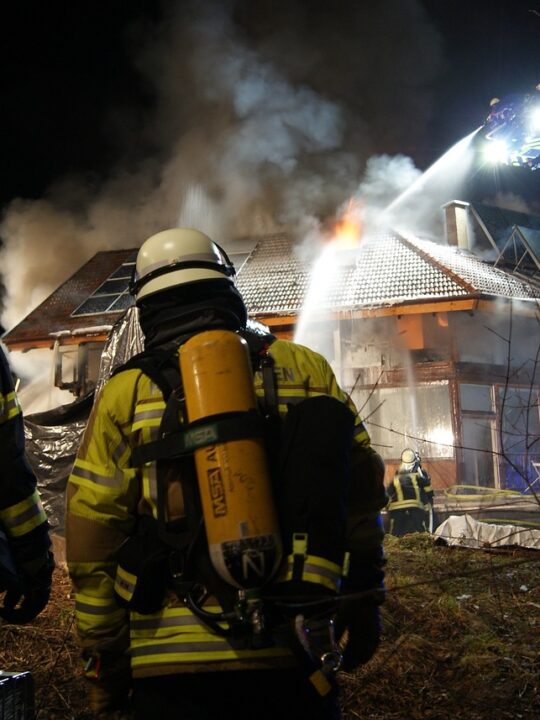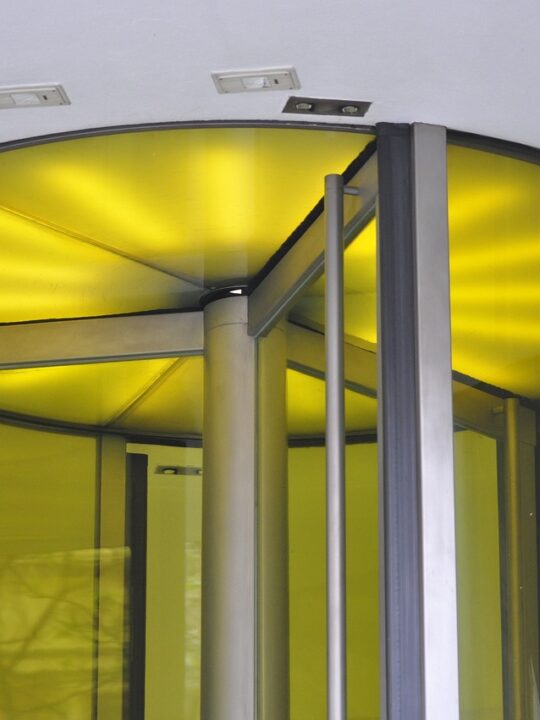Did you know that each year there are 67,512 emergency cases because of the summer heat?
If you keep your air conditioning in good working order and drink lots of water, you’ll significantly reduce the chances of overheating and passing away in the summer months. However, these are significant steps you can take to ensure that you don’t perish in the summer heat.
With that in mind, we want to talk to you about energy conservation in the summer months.
Here’s our guide to energy saving tips for the summer months.
Table of Contents
- 1 1. Use Solar Energy
- 2 2. Utilize Energy-Efficient Appliances
- 3 3. Turn off Lights When Not in Use
- 4 4. Close Blinds and Drapes During Daytime
- 5 5. Use a Programmable Thermostat
- 6 6. Swap Out Incandescent Bulbs for Led Bulbs
- 7 7. Take Advantage of Natural Air Movement
- 8 8. Use Fans to Circulate the Cooled Air
- 9 9. Line Dry Your Clothes
- 10 10. Seal Air Leaks
- 11 Use These 10 Energy Saving Tips for the Summer Months Now
1. Use Solar Energy
Solar energy is a wise investment for you, as it’s a renewable and sustainable source of energy. It can help reduce your carbon footprint and provide long-term savings. Installing solar panels on your roof is a major upfront cost, but you can recoup the costs over time.
Utilizing solar energy also has benefits such as air conditioning and other energy costs, as sunlight converts to electricity by solar panels. Additionally, you can take advantage of incentives such as tax credits and local rebates to help make the cost of solar panels more manageable.
With solar installation, you can save up to 60 percent on your utility bills. You can as well generate your energy and even sell it back to the grid. Moreover, solar power systems can be installed in the home or for business purposes.
Using a solar water heater will also help reduce energy costs. Solar water heaters allow water to be heated using natural sunlight. Moreover, this renewable energy is harvested during the day, so you can use the energy at night or when the sun isn’t out.
Solar energy is also beneficial in the long term, as it can reduce dependence on non-renewable energy sources, ultimately leading to improved air quality. Energy saving with solar energy is a great way to reduce dependence on utility companies and rival the traditional power grid. With all these undeniable truths, switch to solar energy now!
2. Utilize Energy-Efficient Appliances
When it comes to energy-saving tips for the summer months, utilizing energy-efficient appliances is one of the most effective. By taking the time to upgrade your appliances with more energy-efficient models, you can save yourself time and money while helping reduce your carbon footprint.
In the summer months, utilizing energy-efficient appliances can help reduce both your energy bill and your environmental impact. They use a smaller level of energy than conventional appliances. EnergyStar branded appliances are all marked by the US Environmental Protection Agency as popular and efficient appliances.
By making the switch to more efficient devices, you can save up to 10-30% on your energy bill. Additionally, many of these appliances feature preset temperature settings and timers. This allows you to create a customized plan for each room and ensure your appliance isn’t running at peak efficiency when it isn’t being used.
Also, opting for a natural gas stove instead of an electric one is another great way to save energy in the summer months. Things like clothes washers, dryers, and refrigerators are all important appliances to focus on.
Be sure to clean these appliances regularly to make them last longer. A good way to maintain these season-specific appliances is to be sure to regularly get the dust and dirt off their filters and grilles.
3. Turn off Lights When Not in Use
When leaving for an extended time, such as going on vacation, it is important to unplug or turn them off. It is important to remember that when lights are not in use, they are still drawing power and contributing to your electricity bill.
Shutting them off reduces the output of heat that can make warmer parts of your home even unbearably hot. Furthermore, setting a timer for your lights to automatically shut off when not in use can be a good idea as it prevents lights from staying on for long durations.
Making sure not to forget rooms where people don’t have regular access such as bathrooms, closets, and guestrooms can save significant energy and money. If a room has many light fixtures, consider using motion sensors to turn the lights on and off to save energy.
4. Close Blinds and Drapes During Daytime
An often overlooked energy-saving tip to keep cool during the summer months is to close all your blinds and drapes during the day. Direct sunlight that enters your home causes temperatures to rise, making it harder to keep your home cool.
Closing curtains and shades before the sun reaches your windows helps to keep it from heating your home, so you’re less likely to need to run the air conditioner. Also, when the sun is at its peak, about midday, pull down the curtains to keep reflective sunlight from entering the house.
The blinds and drapes create an air pocket between the fabric and the glass window. This helps to block the sun’s hot rays from entering the room, making it more difficult for the air conditioning to cool the space.
In addition to this, the blinds and drapes absorb extra heat from the outside. As a result, the hot temperature outside is trapped, which keeps the indoor temperature lower.
If you have any windows that face west, draw the curtains and shades in the afternoon. When you are using air conditioning, you can also use white linen curtains that will act as a natural sunshade without completely blocking out any light
5. Use a Programmable Thermostat
Programmable thermostats have become increasingly popular over recent years to help save energy during the summer months. This allows you to set your desired temperature settings and times, which are typically adjusted to lower temperatures at night or during the work day when you are away from home.
By using a programmable thermostat, you can save energy during the summer months by allowing the indoor temperature to automatically increase or decrease according to your specified settings. This not only ensures energy efficiency but also helps to improve the overall comfort of your home.
Additionally, you can use this tool to your advantage and set higher temperatures during the hottest days of summer and lower temperatures during the cooler days. This makes sure you are making the most efficient use of your cooling system.
A programmable thermostat also allows you to make the settings quickly and easily, so you don’t have to worry about manually adjusting your thermostat throughout the day. When used correctly, this device can have a lasting energy-saving impact during the summer months.
6. Swap Out Incandescent Bulbs for Led Bulbs
LED bulbs are much more efficient than traditional incandescent bulbs, often using up to 80 percent less electricity. They also generate less heat and can last up to 25 times longer, meaning that you will be able to save money on replacement costs too.
Incandescent bulbs can produce a lot of heat, making a room unbearable in the summer and forcing an AC unit to work overtime. LED bulbs consume less energy and emit significantly less heat and light.
Additionally, LEDs produce a cooler light and are available in a variety of colors, providing extra customization options and enhancing your home’s style. Therefore, investing in energy-efficient LED bulbs can greatly reduce your energy costs while also improving the look of your home.
Furthermore, LED bulbs are environmentally friendly, with no toxic chemicals or mercury. This can help you do your part to reduce the carbon footprint of your home.
7. Take Advantage of Natural Air Movement
It’s important to look for breezes outside and then reap their cooling benefits inside. It may sound simple, but the key is to open up the windows of the house in the evening after the sun has gone down or in the early morning when the air is cooler.
Taking advantage of natural air movement also means leveraging cool breezes from bodies of water and shrubs/trees on your property – such as planting trees for shade around your home. Properly positioning the windows, fences, and other structures can create a wind corridor. This makes it similar to a wind tunnel, and can greatly help to cool down a home naturally.
Move furniture away from registers to maximize airflow. If possible, try making full use of a cross-breeze by opening windows on opposite sides of the home. Moreover, setting up awnings and overhangs outside of windows can help block out direct sunlight
8. Use Fans to Circulate the Cooled Air
Fans use less energy than air conditioners, allowing you to keep your energy bills low. To maximize energy savings, make sure to place your fans in the brightest parts of your home. Doing so will effectively circulate the cooler air from your AC.
Furthermore, set your thermostat a few degrees higher then combine this with using fans to reduce the humidity in each room. Doing this will help you save energy while remaining comfortable during the hot summer months.
If you have ceiling fans, make sure to set them to spin counter-clockwise in the summer months, so the air is pushed down, not up. By circulating the air, your fans can make the room feel at least 8 degrees cooler.
As an additional energy-saving tip, shut off ceiling fans when the room is unoccupied and close the windows when using a fan to let the air cool down. Fans can also be used with an evaporative cooler in more humid climates to help move the cooled air throughout the room.
9. Line Dry Your Clothes
Line drying your clothes in the warm summer months is an easy way to save electricity and money while helping to reduce your greenhouse gas emissions. Line drying your clothes also helps to reduce wear and tear on the fabric.
Simply hang freshly washed clothes on a clothesline or a rack in your backyard to let the sun and wind do the work. During cloudy or windy days, you can use a drying rack indoors to let your clothes finish drying.
You can hang the clothes outside on a clothesline or on the backs of chairs or benches. It usually takes 1–3 days for clothes to dry in the sun, depending on the type of fabric and weather.
Line drying clothes takes a bit of extra effort, but it will help to save a substantial amount of money on electricity bills and benefit the environment in the long run. Plus, you get the added benefits of sun-bleached whites and linens with a beautiful summer scent.
10. Seal Air Leaks
Start by checking around all door and window frames, baseboards, electrical outlets and switches, and gas lines. You must make yourself aware that cooled air can escape through these. Drafty areas near doors and windows can be sealed with caulk and weather stripping.
If you don’t have time to caulk, you can also use a foam sealant spray which can help reduce the chance of air infiltration. Also, it might be worth investing in a window insulator kit that acts like a bubble wrap for windows and keeps the hot air outside and the cold air inside.
Place insulation around pipes, ductwork, and electrical fittings in the walls, floors, and ceilings of your home. Use door snakes or draft blockers to stop cool air from slipping under the door. Consider investing in energy-efficient windows and doors to reduce your energy bills.
You can also make use of window treatments and properly align them to keep direct sun out of your home, reducing the need for air conditioner usage. These all help to keep cold air in and warm air out, resulting in a cooler interior and lower energy costs.
Use These 10 Energy Saving Tips for the Summer Months Now
The summer months can be made much more energy efficient by using solar energy and energy-efficient appliances, turning off unnecessary lights, closing blinds during the daytime, and using a programmable thermostat. Along with these, you can also switch to LED lights, take advantage of natural air, use fans, and seal air leaks.
With these, you can save money while still enjoying the summer months. Start making a difference today – use these energy saving tips to save energy and money throughout the summer!
Looking for more ways to cut back and save? Then read the other contents of our blog!







